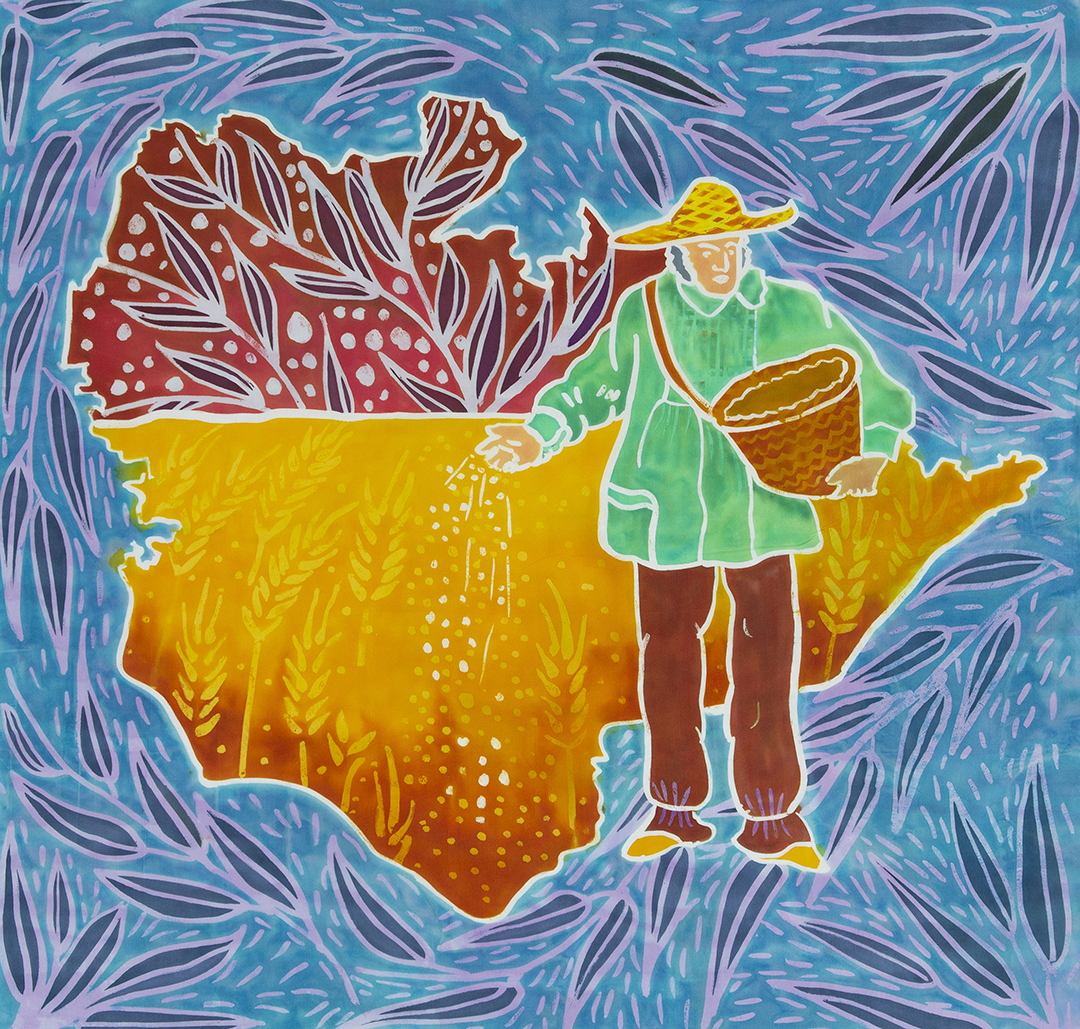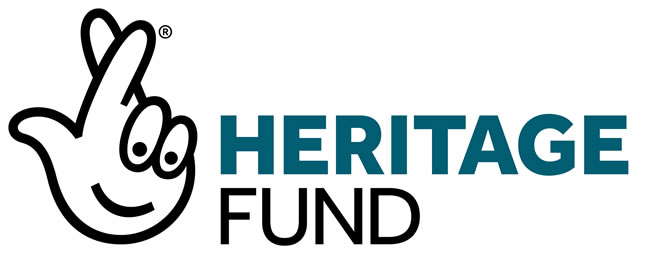
97. 18th Century Farmer ‘Burt’
Burt the farm labourer
My name is Burt and I live with my family in Broadfields Farm cottage with our dog Dot who chases the rats as well as the chickens and ducks around the farm yard and our two pairs of shire horses Nobby and Beth and Bonny and Tom. I work for a local farmer who owns several farms in North Ockendon and Cranham.
The farm is arable with vegetable and cereal crops keeping local labourers and their families busy throughout the year. In the spring when the skylark begins to sore in the sky the farming year begins with sowing and planting in the fields that have been ploughed and harrowed through the autumn and winter months. As the soil awakes, the whole countryside comes alive with crows, pigeons and starlings swooping over the fields where the new crop of seeds are being scattered and children pester grandparents for old cloths to build scarecrows in an effort to protect the new crop. Soon the cuckoo joins the chorus and the rhythm of the year begins and fields start to turn from brown to green.
At the beginning of spring, walking back across the fields from All Saints Church dressed in our Sunday best, the blossom in the hedges hums with hungry bees with the promise of trees full of fruit before the winter chill returns. The children skip ahead warily skirting round the gypsy caravans that have gathered in the dell near the dew pond. Ma Wakeling, who returns every year, sits at the door of her brightly decorated caravan and puffs on an old clay pipe whilst wittling clothes pegs from branches pulled from the hedgerow. Later she will wander around the village bartering her pegs for produce. She will be on her way in a day or two.
Charley, our horseman, along with Ack his son, look after the horses, visiting every day through the winter to take the horses to the pond for water, muck out the stables, give the horses a quick brush and comb before returning them to their stalls to munch on their oats, barley and mangold feed. The dung heap in the orchard grows day by day ready for autumn muck spreading. At the beginning of May, as the morning sunshine grows warmer, each pair of horses is lead with heads tossing and an occasional skip in their step towards the meadow where the gate, swung open by gathering children who have come to join in the excitement, brings the smell of fresh grass in their nostrils. The halters are removed and a slap on the rump send the four legged power houses galloping across the meadow, kicking their back legs and rolling in the fresh grass, hairy hooves thrashing the air.
Alf and Archy hang up their axes, shovels and rakes that were used to lay and trim the hedges and clear the ditches during the dormant winter months , carefully storing saws, hammers and nails used to repair gates and barns ensuring they are cleaned and oiled ready for next winter. Now they gather hoes and forks to weed the growing crops as Dot runs between their legs and along the rows of fresh shoots. The fields begin to buss with helping hands from families who relish the anticipation of fresh vegetables and fruit. Soon the children will help to carry buckets of water from the yard pump to fill the tank for washing vegetables in the bunching shed.
The vegetable harvest brings the seasonal workers who arrive at dawn, the men with their lower legs wrapped in sacking and trousers tied below the knee with string to protect against the wet crops and the women in the bunching shed ready to wash vegetables and tie in bunches or packed in boxes ready for Stanley to transport to market. Having collected the vegetables from all the farms Stanley sets off for market at 5am hoping to catch the early buyers and sell all his produce. If he does sell it all the journey home will include several stops at various hostelries often leaving the team of horses to find their own way home as he snores in the wagon. At lunchtime in the bunching shed, the cauldron is lit to make the tea in a bucket and sometimes Jack will bring his squeezebox for a sing-along.
The harvest ends with the gathering of the corn when all the villagers get involved some following the sail binder gathering the long golden storks to tie into sheaves and stand in stooks ready for the wagon to collect whilst others toss the sheaves onto the wagon with long handled pitch forks. The horses know the route back to the barn skilfully stirring the loaded wagons through gateways into the barn to be unloaded or to be stored in stacks in the stack yard. Soon the rhythmic hum of the steam engine will be heard across the cleared fields as Stan White brings his threshing machine to thresh the corn. With straw in the hayloft for winter bedding and sacks of golden grain dispatched to the windmill, the land begins to rest and families celebrate the ’harvest home’ with homemade cider and wine made from fruit from the hedgerows. The farming year at Broadfields comes to an end with the whole village joining together for Harvest Festival at All Saints Church followed by harvest supper with music, singing and dancing often into the early hours leaving sore heads for the early risers. Winter returns .
Story writer/provider
Mary Wright
Flag Designer
Jo Beal
Painter(s)
Kinetika Artists
Landscape Character Area
Thurrock Reclaimed Fen



